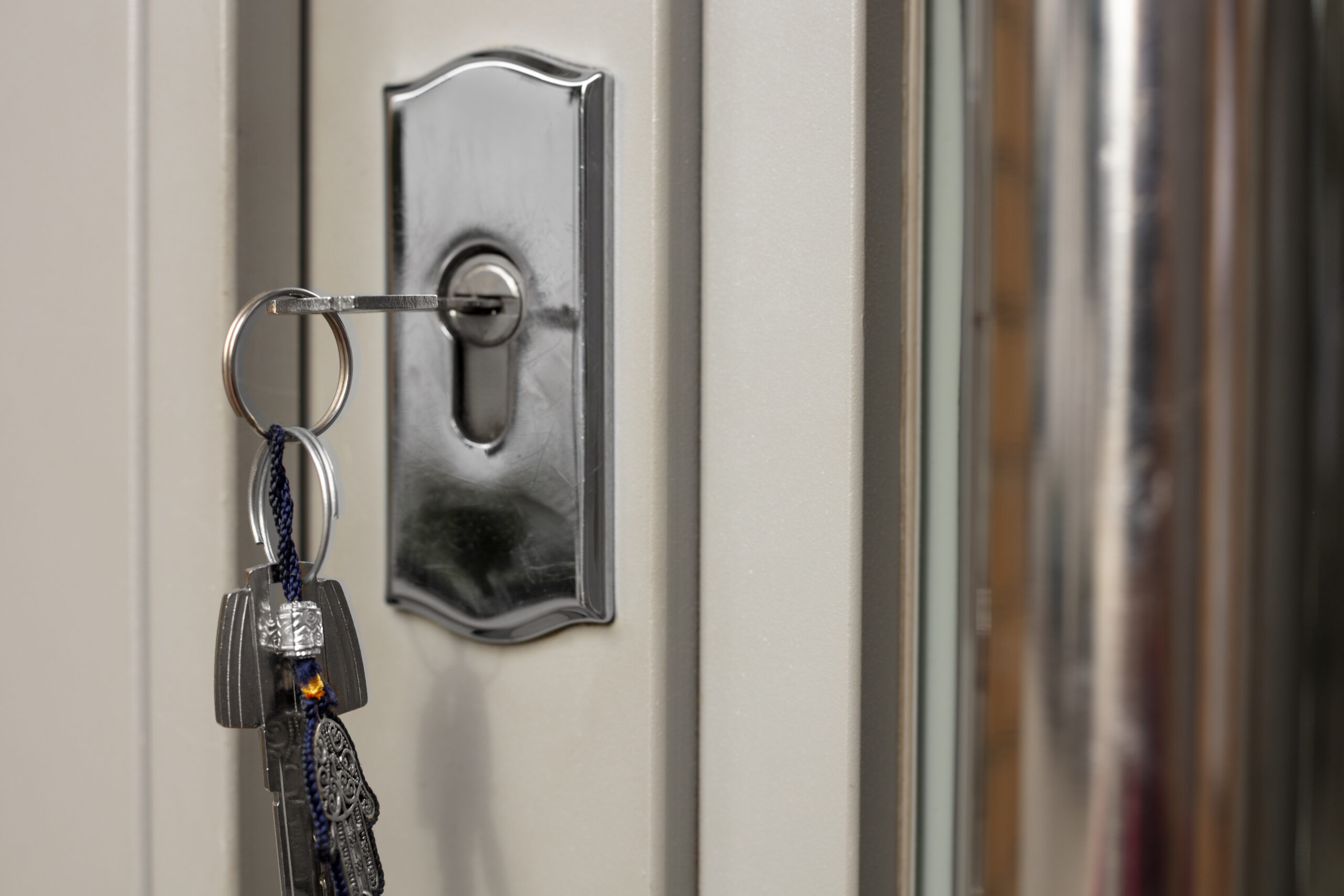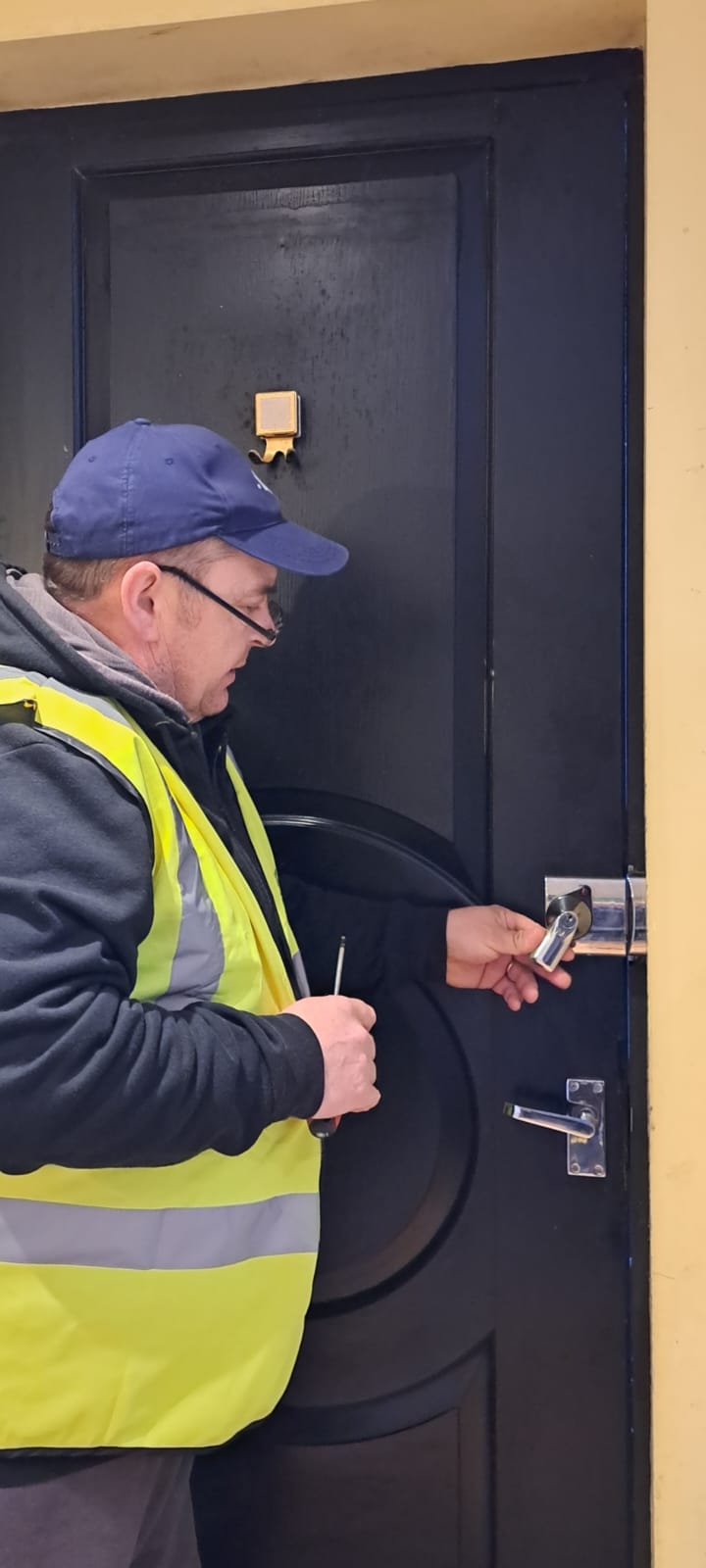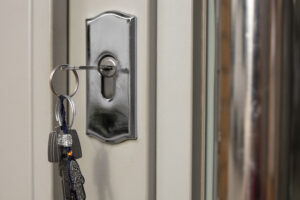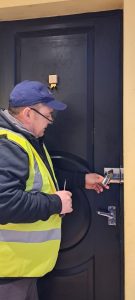| 7 Door Lock Problems & How to Fix Them Without Calling A Locksmith (House and Commercial Doors) |
Door lock issues are among the most common maintenance headaches for both homeowners and business managers. While most callouts for UK locksmiths involve serious issues that need skilled intervention, many lock problems can be solved quickly and safely without professional help.
1. Sticky or Stiff Locks

This expert guide will look at the most common door lock problems and how to fix them without calling a locksmith.
Sticky locks are a leading cause of lockouts. This problem is especially common in environments prone to dust, moisture, or heavy use, such as busy office entrances or exterior home doors.
Why It Happens:
- Accumulation of dirt, dust, or debris inside the lock mechanism.
- Lack of lubrication, especially after long periods without maintenance.
- Weather conditions can cause internal components to contract or expand.
DIY Fixes:
If you find yourself with sticky or stiff locks, try the following steps to solve your issues:
Key Cleaning: Sometimes, the key itself carries debris. Clean it with rubbing alcohol and a cloth before reinserting.
Lubrication: Use a graphite-based or silicone spray lubricant. Insert the straw into the keyhole and spray lightly. Note that it’s best to avoid WD-40 or oil-based products because they can attract more dirt.
Work the Mechanism: Insert the key and gently turn it back and forth several times to distribute the lubricant.
Compressed Air: Use a can of compressed air to blow out any dust or debris from the keyhole.
PRO TIP
Schedule lock lubrication every six months, especially before winter and after periods of heavy rain or dust. This should help you avoid the problem entirely.
2. Misaligned Door Lock or Latch
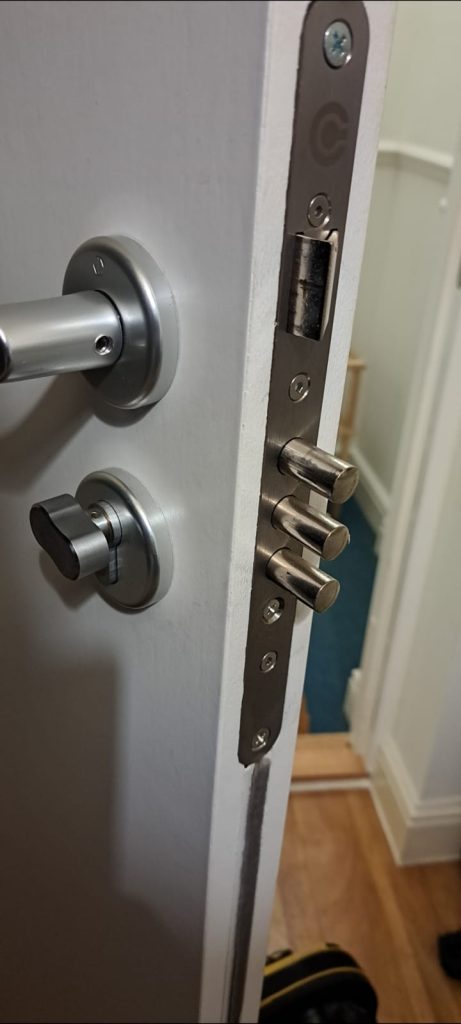
Misalignment is the culprit in a lot of reported lock failures. The problem particularly affects older buildings or properties with wooden doors. Seasonal humidity can cause wood to swell or shrink, which can shift the door and misalign the lock and strike plate.
Why It Happens:
- Settling or warping of door frames.
- Loose or sagging hinges.
- Improper installation or wear over time.
DIY Fixes:
- Hinge Adjustment: Tighten all hinge screws. If the door sags, replace worn screws with longer ones to anchor into the frame.
- Strike Plate Repositioning: Loosen the screws on the strike plate, adjust its position so the latch lines up, and retighten. If necessary, chisel out a small amount of wood to allow for better alignment.
- Weatherstripping Check: Remove or reposition any weatherstripping that may be blocking the latch.
PRO TIP
If you notice the door sticking at the top or bottom, check for uneven gaps around the door when closed. This can help pinpoint which hinge or area needs adjustment.
3. Key Won’t Turn or Is Hard to Insert

A key that won’t turn is another common reason for an emergency locksmith callout. These problems happen in residential and commercial settings, especially in buildings that have older locks. While not always resulting from the same causes, this problem can also manifest in a key that is hard to insert into the lock.
Why It Happens:
- Dirt or debris inside the lock cylinder.
- Worn or bent keys.
- Internal lock wear or damage.
DIY Fixes:
Here are some fixes for a key that won’t turn that you should try before calling out a locksmith.
- Lubricate the Lock: Use a dry graphite lubricant or a silicone spray. Avoid oil-based lubricants as they can gum up the mechanism.
- Try a Spare Key: If a spare works smoothly, your original key is likely worn or bent. Replace it before it breaks inside the lock.
- Inspect for Damage: If neither key works, the lock cylinder may be damaged. If you’re able to do it, you can remove the lock and check for visible wear or obstructions.
- Wiggle Technique: Gently wiggle the key as you insert it; sometimes internal pins are slightly misaligned and need coaxing.
PRO TIP
If you notice your key is becoming harder to insert or turn, address it immediately to avoid a broken key or total lock failure.
4. Loose Door Locks or Handles
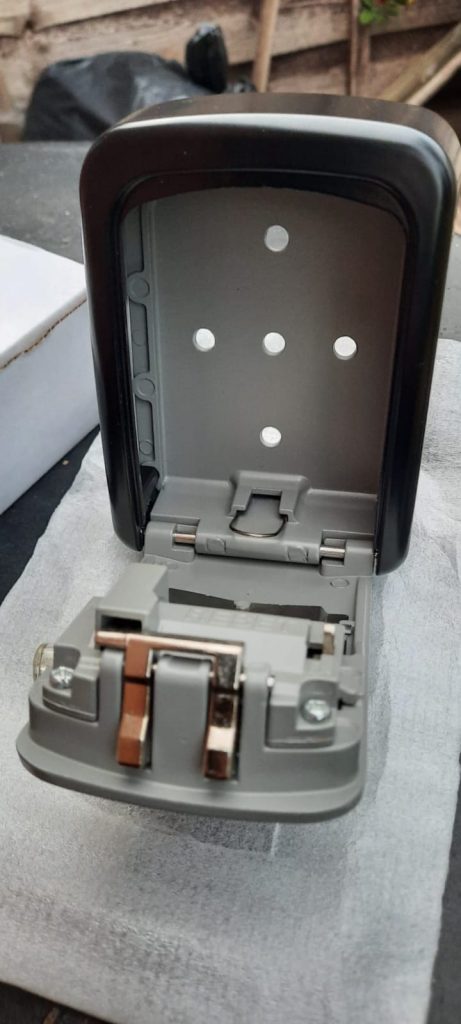
Loose locks and handles are a significant cause of break-ins involving forced entry, according to police reports. When a lock or handle is loose, it’s easier for intruders to force the mechanism. So, if you find yourself with this problem, it’s best to deal with it as soon as possible, whether that’s by yourself or calling out a locksmith.
Why It Happens:
- Frequent use causing screws to loosen.
- Worn or stripped screw holes.
- Internal lock components wear out.
DIY Fixes:
As you can see from above, wear and tear from regular use is the primary reason why door locks and handles become loose. Here are some remedies you can try yourself before deciding to replace the lock or seek the services of a professional.
- Tighten Screws: Use a screwdriver to tighten all visible screws on the lock faceplate and handle. For commercial doors, check both sides.
- Replace Stripped Screws: If screws won’t tighten, replace them with longer or thicker ones for a firmer grip.
- Check for Internal Wear: Remove the lock from the door and inspect for broken or worn internal parts. Replace any damaged components.
- Reinforce with Wood Filler: For stripped screw holes in wooden doors, fill the hole with wood filler, let it dry, and reinsert the screw.
PRO TIP
Regularly inspect high-traffic doors, such as main entrances and office doors. Additionally, tighten the hardware every few months, where required.
5. Key Stuck or Broken in Lock

Broken keys are another frequent source of emergency locksmith call-outs. This problem increases significantly during the winter, when cold weather can make metal more brittle.
Why It Happens:
- Forcing a key into a sticky or misaligned lock.
- Using a worn, bent, or cracked key.
- Cold weather contributes to metal fatigue.
DIY Fixes:
- Gentle Removal: If the key is stuck but not broken, gently wiggle it while pulling out. Use needle-nose pliers for extra grip.
- Broken Key Extractor: Purchase a broken key extractor tool (available at most hardware stores). Insert it into the lock alongside the broken key fragment and pull out.
- Thin Blade Method: Use a thin jigsaw blade or a bobby pin to hook the broken piece and slide it out.
- Lubricate: Apply a small amount of graphite lubricant to ease removal.
PRO TIP
Never force a key that feels stuck. If you notice cracks or bends in your keys, replace them immediately to avoid breakage. It’s far less of a hassle to replace a key than it is to extract a broken or snapped key from a lock.
6. Lock Cylinder Spins But Doesn’t Lock
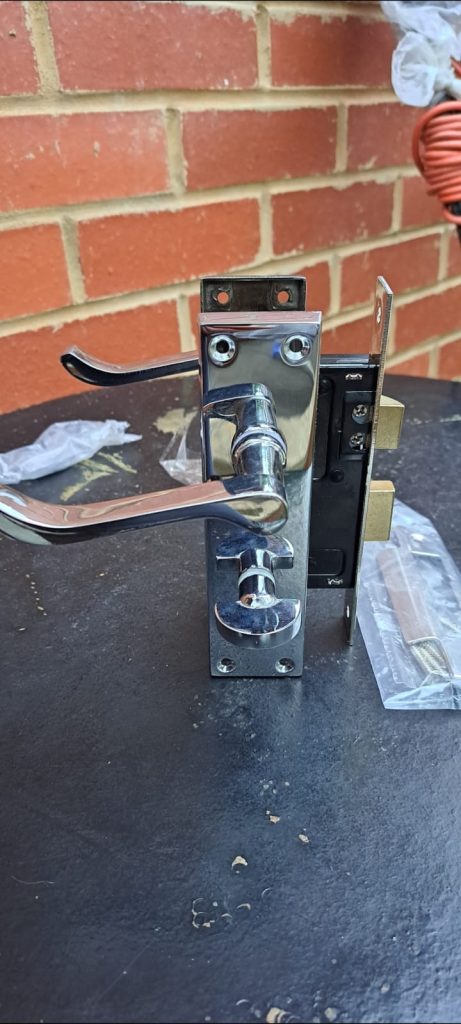
Stats & Example:
A spinning lock cylinder is a sign of internal failure. Typically, it’s caused by a broken cam or tailpiece, i.e., the part that rotates or extends to engage or disengage the latch. This issue is more common in commercial locks that see heavy use.
Why It Happens:
- The set screw securing the cylinder is loose or missing.
- The cam or tailpiece inside the lock is broken.
- Wear and tear from frequent use.
DIY Fixes:
- Remove the Lock: Unscrew the lock from the door and inspect the cylinder.
- Check the Set Screw: Tighten or replace the set screw that holds the cylinder in place.
- Replace Broken Parts: If the cam or tailpiece is broken, purchase a replacement kit for your lock model.
- Reinstall Securely: Make sure all components are properly aligned and tightened before reinstalling.
PRO TIP
Disassembling isn’t very straightforward for most. If you’re unsure about taking apart and putting back together a lock, take photos during each step to help with reassembly. Always ensure the lock is securely fastened to prevent future spinning.
7. Door Won’t Latch or Close Properly
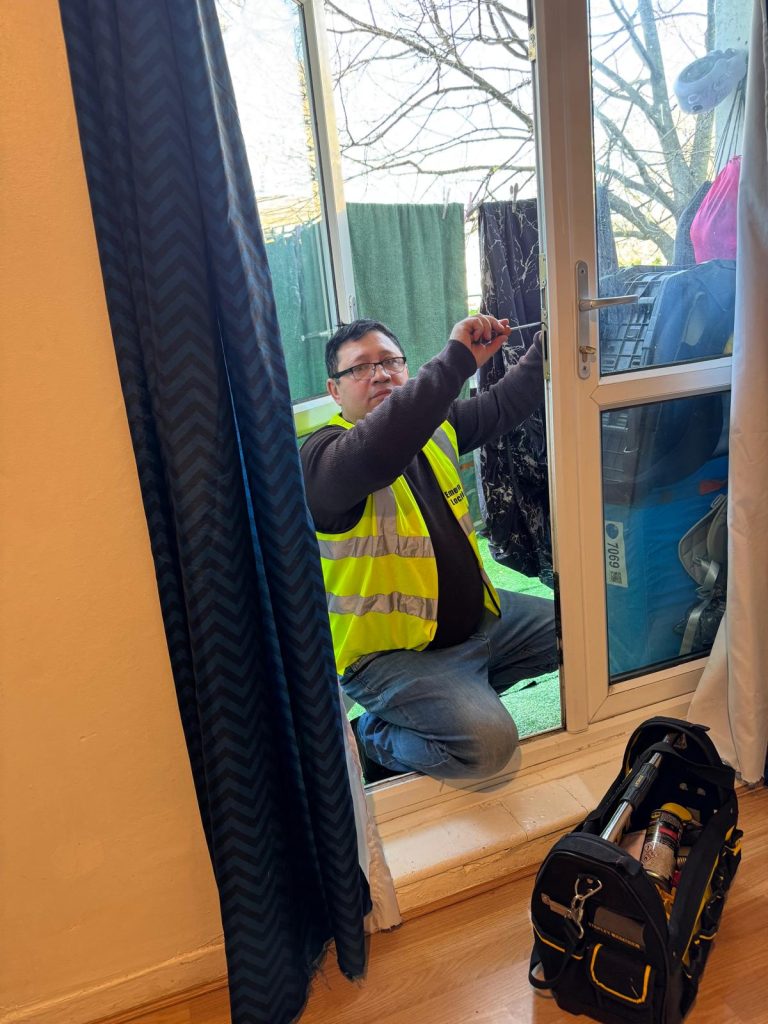
A door that won’t latch is a major security risk. Police data shows that 12% of burglaries involve doors that were simply not latched or closed properly. These sorts of careless lapses can also cause insurance problems, with some firms refusing payouts because the building was not adequately insured.
Why It Happens:
- Warped or swollen door frames are common after heavy rain or humidity.
- Misaligned strike plate or latch.
- Debris or obstructions in the latch area.
DIY Fixes:
A door that won’t latch needs immediate attention. It’s definitely possible to fix it yourself. Here are a few steps to help you get your home or business secure again.
- Adjust Hinges: Tighten or replace screws in the hinges to lift or shift the door as needed.
- Realign Strike Plate: Move the strike plate up, down, or sideways to match the latch position. Use a chisel to enlarge the opening if necessary.
- Remove Obstructions: Clean out any debris or buildup in the latch or strike plate area.
- Lubricate Latch: Apply a silicone-based lubricant to the latch mechanism to ensure smooth operation.
Pro Tip
Check your door’s alignment with the frame by closing it slowly and observing where it sticks or fails to latch. Mark these spots for targeted adjustments.
Conclusion
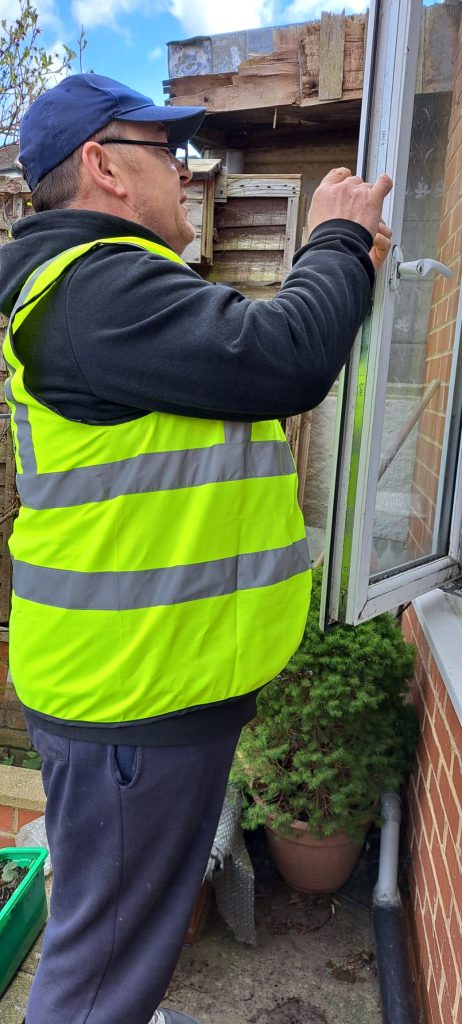
Most door lock problems can be resolved quickly and safely with a few basic tools and some practical knowledge. Regular maintenance not only prevents most issues but also extends the life of your locks and increases security. If you encounter persistent problems or suspect internal damage beyond your skill set, don’t hesitate to call a professional locksmith. Remember: a secure door is your first line of defence for both your home and business.
And, of course, for more tips on all things locks and locksmith related, do visit our blog https://locksmithforlondon.co.uk/blog/

